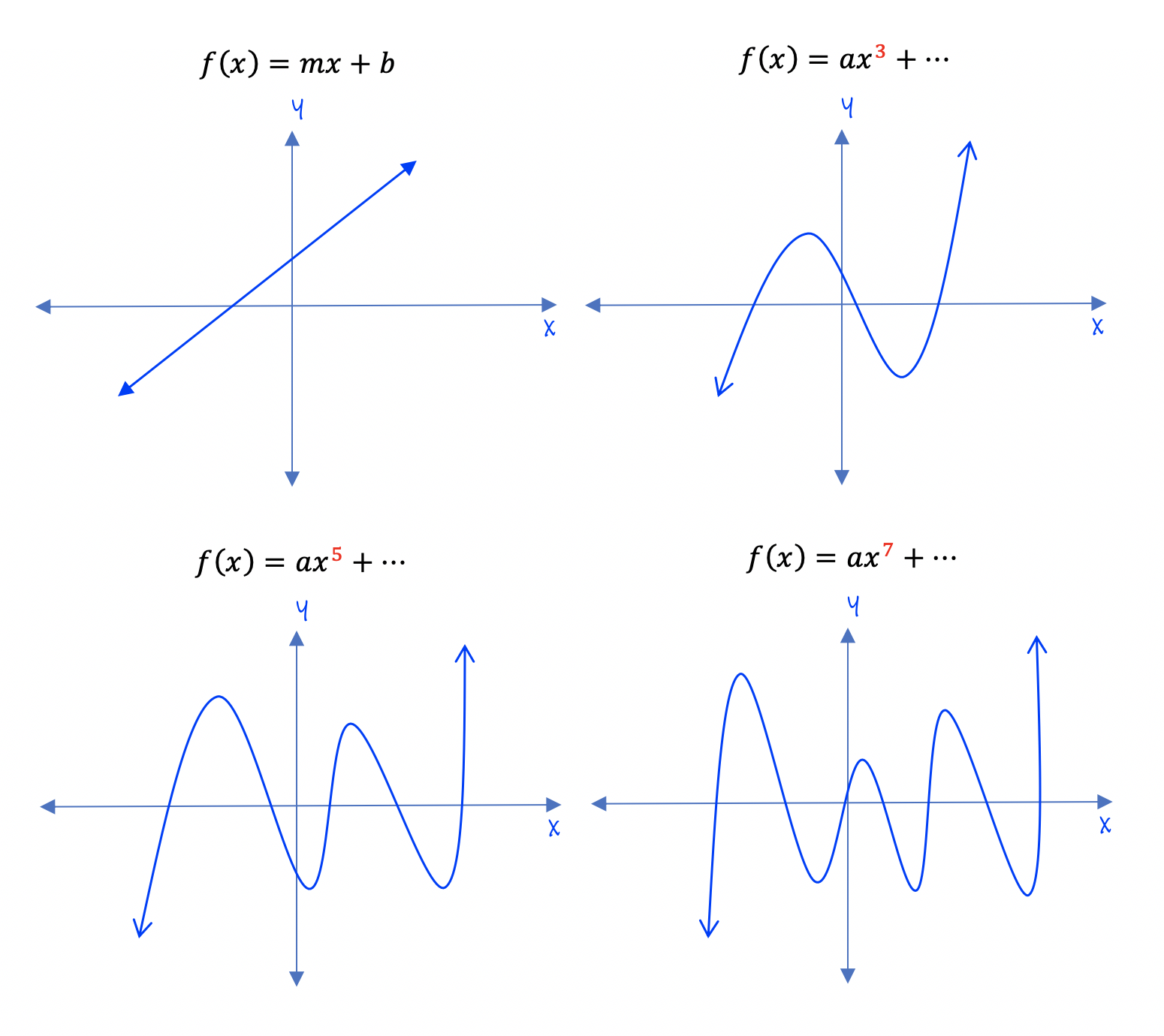What Is Used To Determine The End Behavior Of A Polynomial Function Polynomial end behavior is the direction the graph of a polynomial function goes as the input value goes quot to infinity quot on the left and right sides of the graph There are four possibilities as shown below
Determine end behavior As we have already learned the behavior of a graph of a polynomial function of the form f x a n x n a n 1 x n 1 a 1 x a 0 f x Explains how to recognize the end behavior of polynomials and their graphs Points out the differences between even degree and odd degree polynomials and between polynomials with negative versus positive leading terms
What Is Used To Determine The End Behavior Of A Polynomial Function

What Is Used To Determine The End Behavior Of A Polynomial Function
https://i.ytimg.com/vi/keJrwGvkako/maxresdefault.jpg

Graphs Of Polynomial Functions
https://jillwilliams.github.io/Graphs-of-Polynomial-Functions/images/pic7.png
Polynomial Graph End Behavior My XXX Hot Girl
https://embed-ssl.wistia.com/deliveries/309c809aa301038c4915ae795015b10c.bin
To determine the end behavior of a polynomial function The leading coefficient determines whether the right side of the graph the positive x side goes up or down Polynomials with The leading term test also known as the leading coefficient test or the degree test is a method used to determine the end behavior of a polynomial function In general a polynomial function
The end behavior of a function is the behavior of the graph of the function f x as x approaches positive infinity or negative infinity This is determined by the degree and the The end behavior of a polynomial functions describes how the relationship between input and outputs at the far left and far right of the graph In other words as x becomes increasingly negative approaching negative infinity how
More picture related to What Is Used To Determine The End Behavior Of A Polynomial Function

Determining End Behavior By OpenStax Page 4 13 Jobilize
https://www.jobilize.com/ocw/mirror/col11759/m51276/CNX_Precalc_Figure_03_04_011abcdn.jpg
Graphing Polynomials Problems Answers For Quizzes And Worksheets
https://quizizz.com/media/resource/gs/quizizz-media/quizzes/a325bc67-3d54-4bf2-98d0-dee2f6dc1d50

End Behavior Of Polynomial Functions Using Leading Coefficient Test
https://i.ytimg.com/vi/mHXVNmM8Tng/maxresdefault.jpg
Khan Academy If you re seeing this message it means we re having trouble loading external resources on our website If you re behind a web filter please make sure that the domains Aug 22 2023 nbsp 0183 32 To find the end behavior of a polynomial function examine the highest degree term The sign and degree of this term will determine the behavior of the function as x approaches positive or negative infinity
Identifying End Behavior of Polynomial Functions Knowing the leading coefficient and degree of a polynomial function is useful when predicting its end behavior To determine its end behavior 7 2 4 Use the leading coefficient test to determine the end behavior of polynomials 7 2 1 Identify polynomial functions We have introduced polynomials and functions so now we will

How To Determine The End Behavior Of A Polynomial Function YouTube
https://i.ytimg.com/vi/Q3Z9lbe6JrA/maxresdefault.jpg

Review End Behavior Of Polynomial Functions And Determine End Behavior
https://i.ytimg.com/vi/hs_Jzx2DpRQ/maxresdefault.jpg
What Is Used To Determine The End Behavior Of A Polynomial Function - How to Determine the End Behavior of the Graph of a Polynomial Function Step 1 Identify the leading term of our polynomial function Step 2 Identify whether the leading term has a
